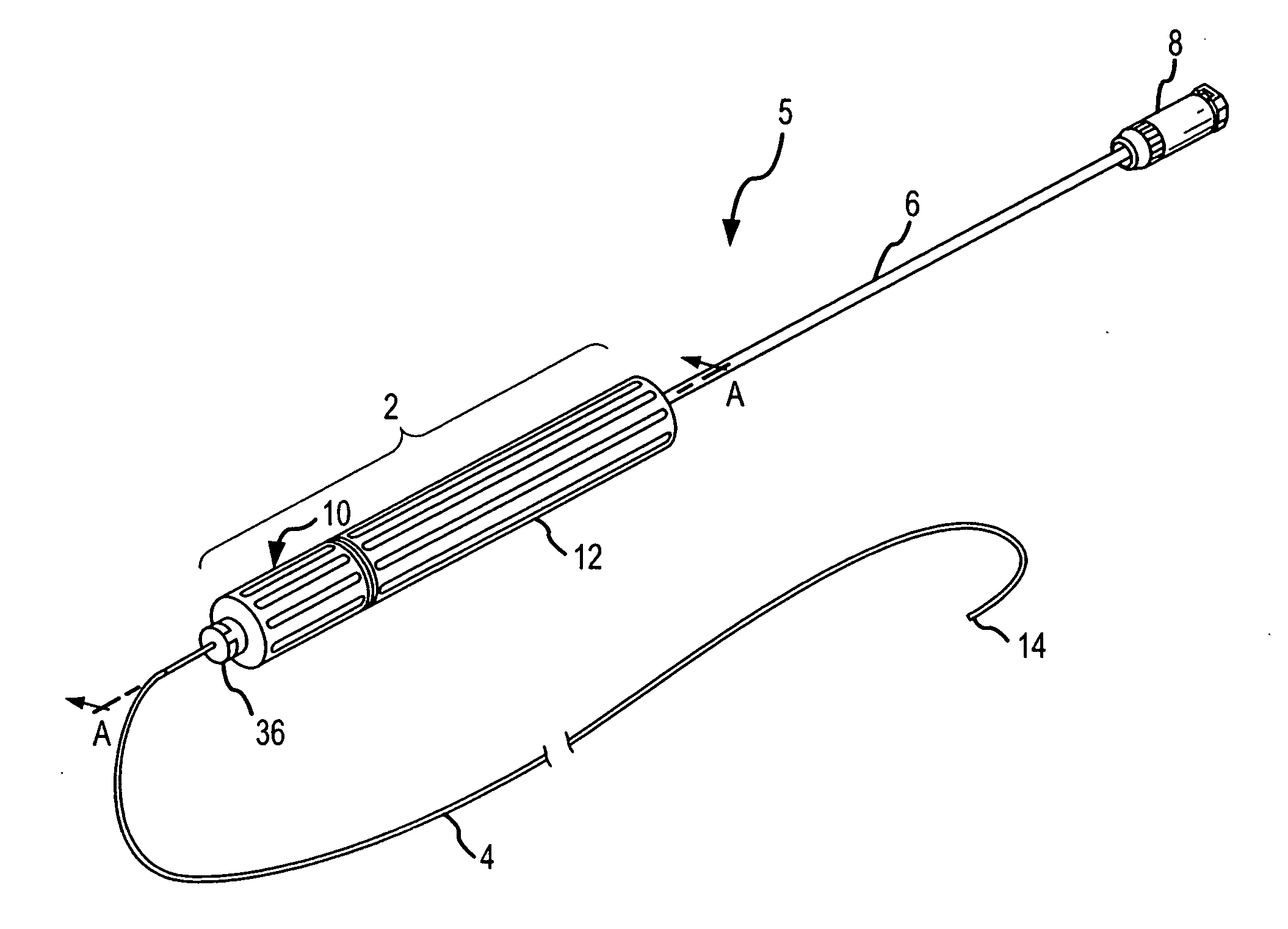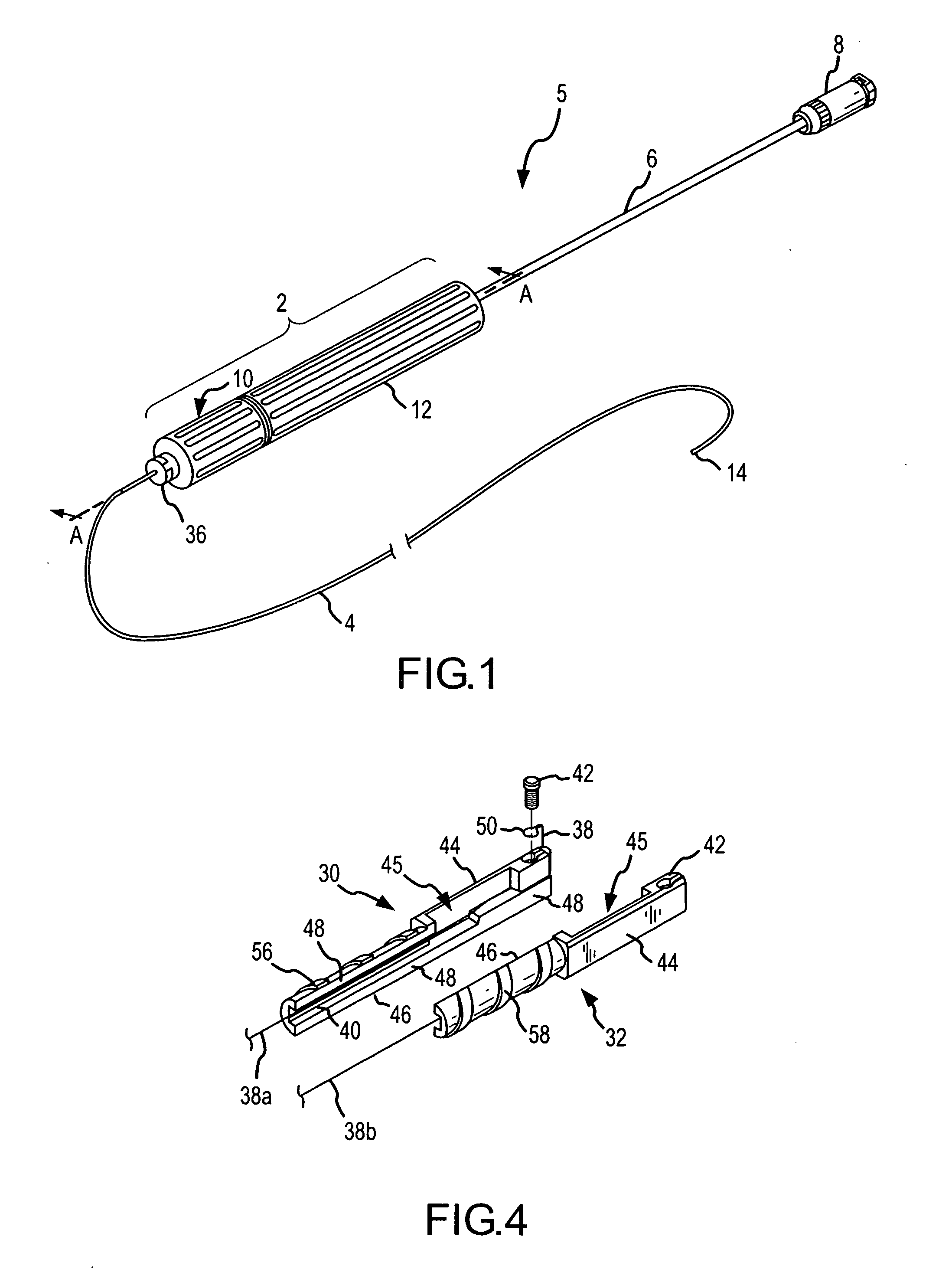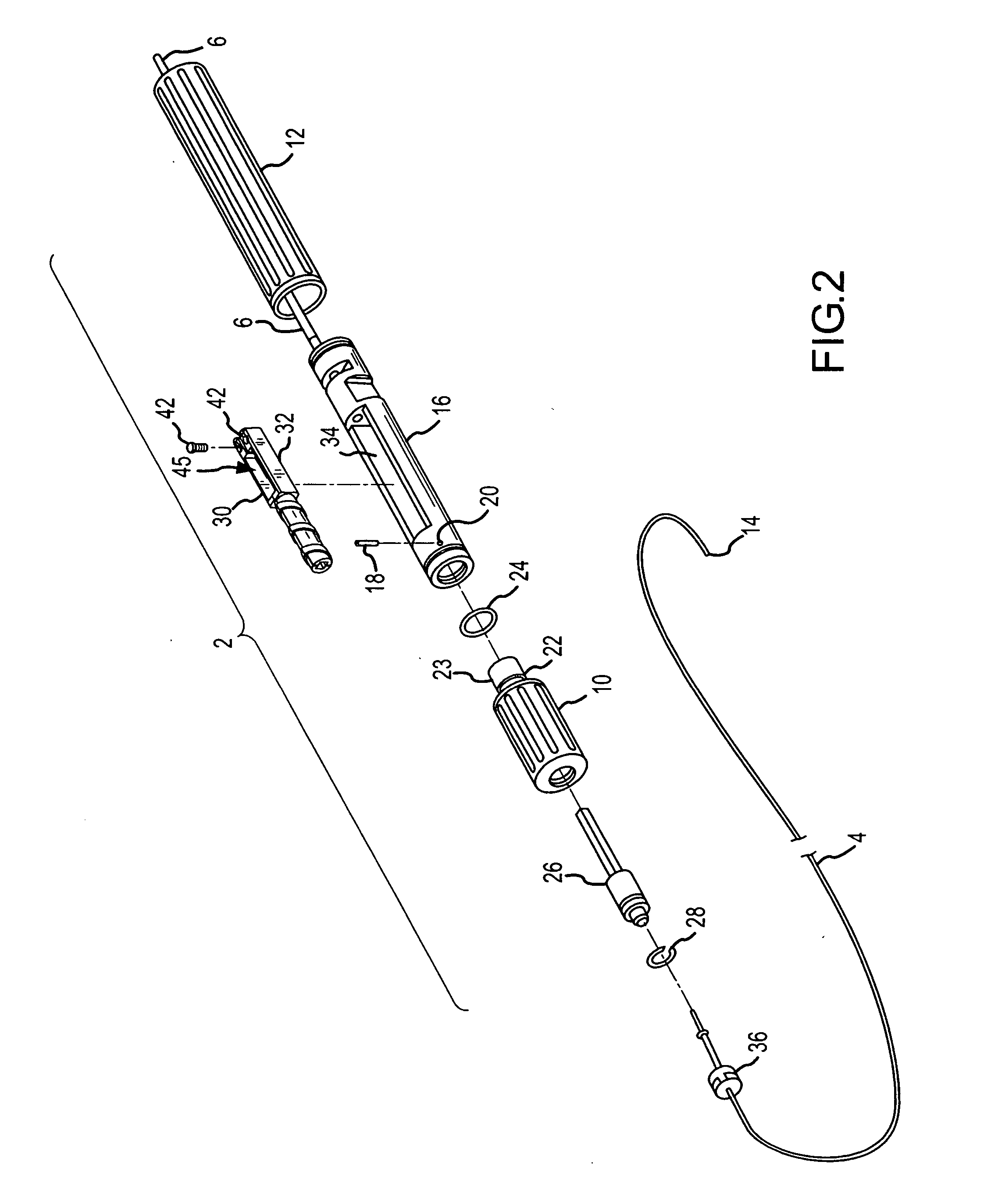Bi-directional steerable catheter control handle
a control handle and directional steering technology, applied in the field of control handles, can solve the problems of insufficient ability of control handles, inability to precisely operate them by a single hand, and large volume of control handles, and achieve the effect of preventing the rotational displacement of the first member
- Summary
- Abstract
- Description
- Claims
- Application Information
AI Technical Summary
Benefits of technology
Problems solved by technology
Method used
Image
Examples
Embodiment Construction
[0061]FIG. 1 is an isometric view of one embodiment of the present invention, which is a control handle 2 for a flexible tubular body 4 of a catheter 5. Throughout this specification, the term catheter is meant to include, without limitation, catheters, sheaths and similar medical devices. As shown in FIG. 1, in one embodiment, the distal end of the handle 2 is connected to the catheter body 4 and the proximal end of the handle 2 is connected to tubing 6 that contains electrical wire and extends to an electrical connector 8. The handle 2 includes an adjusting knob 10 and a handle grip 12. As will become clear from this specification, the handle 2 of the present invention is advantageous in that it is compact and allows a user to manipulate the catheter body's extreme distal end 14 in a bi-directional manner by pivoting the adjusting knob 10 relative to the handle grip 12 in one direction or the other about the longitudinal axis of the handle 2. Furthermore, in one embodiment, the ha...
PUM
 Login to View More
Login to View More Abstract
Description
Claims
Application Information
 Login to View More
Login to View More - R&D
- Intellectual Property
- Life Sciences
- Materials
- Tech Scout
- Unparalleled Data Quality
- Higher Quality Content
- 60% Fewer Hallucinations
Browse by: Latest US Patents, China's latest patents, Technical Efficacy Thesaurus, Application Domain, Technology Topic, Popular Technical Reports.
© 2025 PatSnap. All rights reserved.Legal|Privacy policy|Modern Slavery Act Transparency Statement|Sitemap|About US| Contact US: help@patsnap.com



